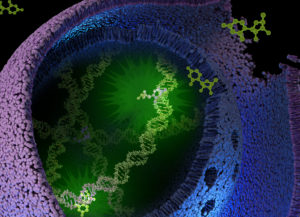Understanding how a compound or drug affects cellular pathways often requires measuring kinetic changes over an extended period of time—from several hours to days. Live-cell kinetic cell-based assays that measure cell viability, cytotoxicity, apoptosis and other cellular pathways are great for collecting real-time data. You don’t necessarily need expensive equipment to run these types of assays. In the videos below, Dr. Sarah Mahan, a research scientist at Promega, demonstrates how you can easily get great 24-hour or multi-day kinetic data using a GloMax® Microplate Reader.
Continue reading “How to Get Real-Time Kinetic Data With GloMax® Microplate Readers”real-time assay
Cytotoxicity Testing of 9,667 Tox21 Compounds using Two Real-Time Assays by Promega
A recent paper in PLOS One demonstrated real-time cytotoxicity profiling of approximately 10,000 chemical compounds in the Tox21 compound library, using two Promega assays, RealTime-Glo™ MT Cell Viability Assay and CellTox™ Green Cytotoxicity Assay. This is exciting to me, a science writer working at Promega; exciting because it’s tricky figuring out how to write about the utility of our products without sounding like an evangelist.
I don’t know about you, but I tend to shut out evangelists and their messages.
Instead of me telling you about real-time viability and cytotoxicity assays from Promega, here is an example of their use in Tox21 chemical compound library research.
What is the Tox21 compound library?
As described in the article by Hsieh, J-H. et al. (2017) in PLOS One:
“The Toxicology in the 21st Century (Tox21) program is a federal collaboration among the National Institutes of Health, including the National Toxicology Program (NTP) at the National Institute of Environmental Health Sciences and the National Center for Advancing Translational Sciences, the Environmental Protection Agency, and the Food and Drug Administration. Tox21 researchers utilize a screening method called high throughput screening (HTS) that uses automated methods to quickly and efficiently test chemicals for activity across a battery of assays that target cellular processes. These assays are useful for rapidly evaluating large numbers of chemicals to provide insight on potential human health effects.”

